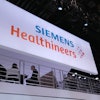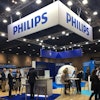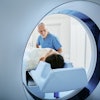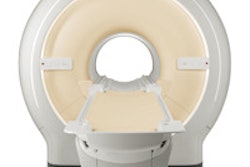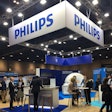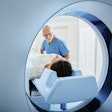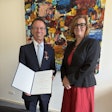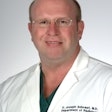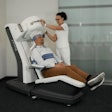
X-ray equipment has traditionally had dedicated systems for specific exams. In 2014, we started to see the market shift toward having one combined system that can be used for multiple exams. One of the main drivers behind this trend has been cost, especially given health spending cuts. Having a room that is only being used for 40% of the day is a waste of resources for hospitals and imaging facilities. Being able to utilize a room more not only reduces operational costs, but provides new avenues for additional revenue. This trend is being seen across x-ray in general radiography and fluoroscopy, as well as interventional and mammography x-ray equipment.
When interventional x-ray was first introduced to the European market, dedicated systems for radiology and cardiology were commonplace, to be used for dedicated procedures. More recently, the market has switched to adopt a 2-in-1 style system, which combines interventional radiology and cardiology.
These 2-in-1 systems are commonly being used for procedures such as transcatheter aortic valve implantation (TAVI) and transcatheter aortic valve replacement (TAVR). Combined systems can be used to perform radiology and cardiology procedures, reducing wasted resource with unused rooms. These systems started to penetrate the market in 2013 and continued in 2014. We forecast 18% growth from 2013 to 2014 in unit shipments. In Western Europe, combined systems are being purchased as part of consolidation of existing radiology and cardiology rooms. In Eastern Europe, combined systems are often being purchased as a first system in many cases to equip hospitals with basic equipment.
In mammography, the debate on 2D versus 3D tomosynthesis continues in Europe. During 2014, uptake of 3D technology started to increase further in Europe, partly due to some new studies showing the benefits. Those looking to update existing analogue or 2D systems have chosen to purchase new mammography systems that use flat-panel detector technology to provide a 2D system that can be configured for tomosynthesis with a software upgrade at a later date.
Other types of systems have been introduced to the market, including 2D combined with 3D systems. These types of systems can be used for either 2D or 3D, and in some cases systems combine both images together to improve diagnosis. During 2014, standalone 3D tomosynthesis purchases were often limited to those with higher budgets. Some other barriers for 3D in 2014 were that reimbursement codes and legislation are still uncertain in markets, in addition to uncertainty surrounding studies on the benefits over traditional methods. The market for both 2D and 3D in Europe is forecast to increase by 9% from 2014 to 2015 for unit shipments.
General radiography and fluoroscopy
Sharing general radiography and fluoroscopy x-ray in one system is not a new concept, and has been used in some European countries for a number of years. In other European countries, hospitals typically have a dedicated radiography suite and a separate fluoroscopy room. In 2014, the market started to move toward the shared approach, with purchasers requesting higher specification radiography and fluoroscopy suites.
These suites include a wall stand and remote controlled bucky table. This reflects the trends discussed above of using a room for the full day, rather than only part of the day. Often fluoroscopic exams are done in the morning, and then systems are left until the next day. This shared approach gives more flexibility for the room. In Eastern Europe, users are purchasing shared systems to reduce the costs of buying two individual systems. This also gives them the freedom to do a variety of procedures and maximize patient throughput.
Future looking
So, will this trend continue in the future? With healthcare budgets remaining tight in most European countries, this trend is forecast to continue well into 2015 and 2016. For countries in Eastern Europe, where many of these systems are a first purchase, some higher-end hospitals are expected to branch out into separate modalities and systems as the hospitals become specialized, with others continuing to use the shared approach. In Western Europe, from 2017 onwards IHS forecasts that we will see greater adoption of 3D tomosynthesis and more adoption of specific radiology and cardiology systems,being driven by advances in new, minimally invasive procedures such as neurology procedures and cancer treatments.
Sarah Jones is an analyst with IHS Medical Technology. IHS Medical Technology provides market research and consultancy services to the medical device industry. Coverage includes medical imaging equipment, clinical care devices, healthcare IT, consumer medical devices, medical displays and wearable technologies.
Originally published in ECR Today on 8 March 2015.
Copyright © 2015 European Society of Radiology

